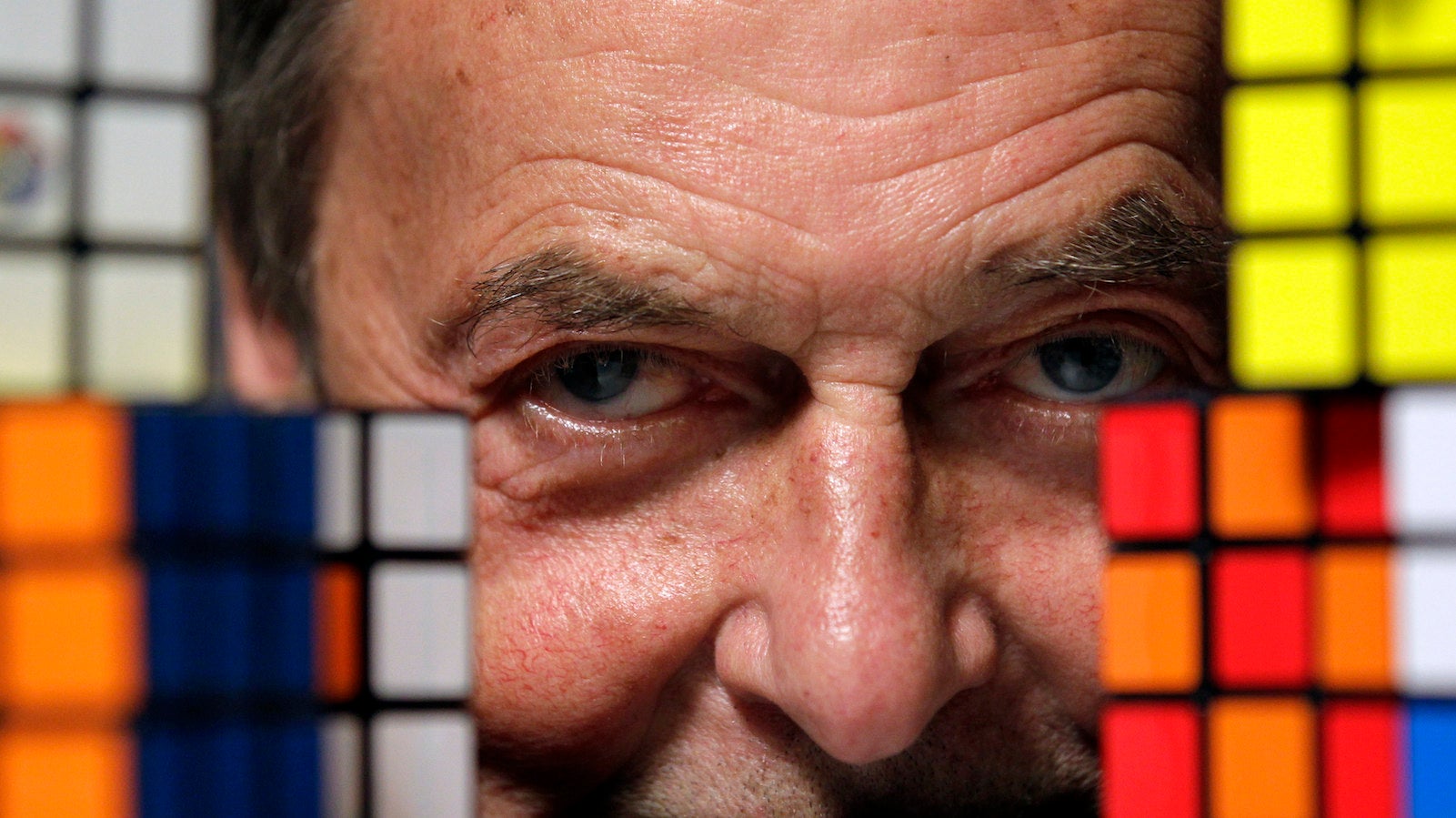It took the inventor of the Rubik’s Cube a month to solve his own puzzle
In 1974, Erno Rubik was a 29-year-old design professor who started fiddling around with a set of wooden blocks in the Budapest apartment he shared with his mother. In some accounts, Rubik has said he was working on a model for his students; according to other accounts, he was amusing himself with an experiment in structural design.


In 1974, Erno Rubik was a 29-year-old design professor who started fiddling around with a set of wooden blocks in the Budapest apartment he shared with his mother. In some accounts, Rubik has said he was working on a model for his students; according to other accounts, he was amusing himself with an experiment in structural design.
What is certain is that he sanded down tiny wooden blocks, glued colored paper to their sides, bound them together with elastic string, and started twisting.
“It was wonderful,” Rubik wrote in an unpublished memoir quoted in Discover magazine, “to see how, after only a few turns, the colors became mixed, apparently in random fashion. It was tremendously satisfying to watch this color parade. Like after a nice walk when you have seen many lovely sights you decide to go home, after a while I decided it was time to go home, let us put the cubes back in order. And it was at that moment that I came face to face with the Big Challenge: What is the way home?”
In other words, the inventor of the Rubik’s Cube had no idea how to solve one. What’s more, he didn’t know if anyone could. Randomly twisting it, he realized, would take longer than he had on Earth. It was later calculated that 43 quintillion possible positions of the Cube exist; the odds of chancing upon the correct one are next to nothing.

It took a month of twisting and re-twisting in his room before he found the solution. Exhilarated, he left the room and showed his mother.
“I remember how proudly I demonstrated [it] to her when I found the solution of the problem,” Rubik wrote, “and how happy she was in the hope that from then on I would not work so hard on it.”
Since then, 350 million Rubik’s Cubes have been sold around the globe—and the world record for solving one is 4.73 seconds. “If you are curious, you’ll find the puzzles around you,” Rubik has said. “If you are determined, you will solve them.”
Keep twisting.